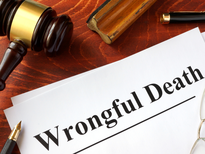Bronx Car Accident Attorney Glenn A. Herman Explains Duty of Care and Negligence Relating to Traffic Accidents
In the United States, drivers are responsible for making the roads as safe as possible for pedestrians, cyclists, and other drivers by driving safely. The legal term for this responsibility is “duty of care.” If drivers fail to meet their duty of care, they may be charged with negligence. In this article, Bronx traffic accident attorneys Glenn & Robin Herman explain drivers’ duty of care in New York.
Driver’s Duty of Care in New York
Your right to operate a vehicle comes with the expectation that you will operate that vehicle in a sensible manner. The bare minimum expected of all drivers is to:
Follow all New York State traffic laws and regulations.
Drive with care and attentiveness.
Avoid causing injury to others to the best of their ability.
The definition of duty of care may seem vague, so to fully understand what drivers are responsible for, it is best to look at the opposite of duty of care, which is negligence.
Negligence in New York Traffic Law
Negligence is defined under New York Law as “a failure to behave with the level of care that someone of ordinary prudence would have exercised under the same circumstances.” Most traffic accidents are caused by negligence. This behavior can have devastating consequences, causing severe injuries or even fatalities for those involved. Most accidents are caused by one or a combination of several of the following types of negligence:
Speeding or driving aggressively, which may constitute reckless driving as opposed to just negligent driving.
Not following traffic signs and signals, such as stop signs, yield signs, posted speed limits, and traffic lights.
Failing to yield to pedestrians and cyclists. Pedestrians have the right of way within marked and unmarked crosswalks when traffic signals permit them to cross. In crossings without signals, drivers must always yield to pedestrians. Cyclists must obey traffic laws as well, but given their elevated vulnerability on the road, drivers should accommodate them when necessary.
Driving while intoxicated. The phrases “driving under the influence” and “driving while intoxicated” often bring to mind the use of alcohol, but they actually encompass all mind-altering substances. This includes certain psychiatric and pain medications that can impair driving ability by affecting reaction time, depth perception, and other factors. Medications like antipsychotics, anti-seizure drugs, muscle relaxants, opioid painkillers, certain stimulants, and even motion sickness relief medications can all have an impact on one's ability to drive safely.
Drowsy driving. Although it is difficult to qualify the exact number of accidents that drowsy drivers are responsible for, the National Highway and Traffic Safety Administration (NTHSA) reports that drowsy driving was involved in at least 91,000 police-reported car accidents in 2017, resulting in nearly 50,000 injuries and 800 deaths. Although drowsy driving fatalities involve a single car with no passengers, it’s not just falling asleep at the wheel that can be dangerous. Driving while overtired or sleepy can lead to poor judgements and negligent decisions that put other drivers at risk.
Failing to account for weather conditions. Responsible drivers adjust their driving according to weather conditions. In slick road conditions, you need a greater stopping distance to brake safely. So leave more space between your car and the car in front. Remember to use windshield wipers, fog lamps, and headlights when required, and keep your windshield free from obstructions like ice and pollen..
Failing to use signals appropriately. Signaling to other drivers is crucial in allowing them to adjust appropriately. Failure to do so while changing lanes or making turns can cause serious accidents, while paying attention to other drivers' signals is your responsibility.
Distracted driving leads to countless accidents. While texting is a common cause, fixing hair/makeup or attending to passengers can be just as dangerous. Stay alert & keep your focus on the road to prevent accidents.
Drivers have an additional duty of care that must be paid to children on the road. Children between the ages of five and nine are the most likely to be hit by cars.
If you're a victim of a traffic accident, negligence was likely involved. Get in touch with an experienced NYC personal injury attorney who can guide you on compensation options for traffic accidents.
About Bronx Car accident Attorney Team Glenn & Robin Herman
Our Bronx traffic accident attorneys take the time to learn every aspect of your case during our initial meeting in order to properly evaluate the full extent of the damages you or a loved one have suffered. We have been representing seriously injured New Yorkers for over 35 years. Born, raised, and living in the City, we know that when you have been injured in this town, you need an attorney to protect your rights and explain the law to you in a way you can understand.
For a no-charge consultation today to discuss the details of your injury event: https://hermannyc.com/free-case-consultation/
We represent clients in all five boroughs of New York (NY): Manhattan, Staten Island, Queens, Brooklyn, and the Bronx, along with Suffolk County & Nassau County on Long Island, Westchester County, Rockland County, and throughout the entire state of New York.
Media Contact
R. William
212-966-1928
hermannycintake@gmail.com
Sources:
https://www.nhtsa.gov/risky-driving/drowsy-driving

Source: Herman & Herman, P.C
Release ID: 646856





